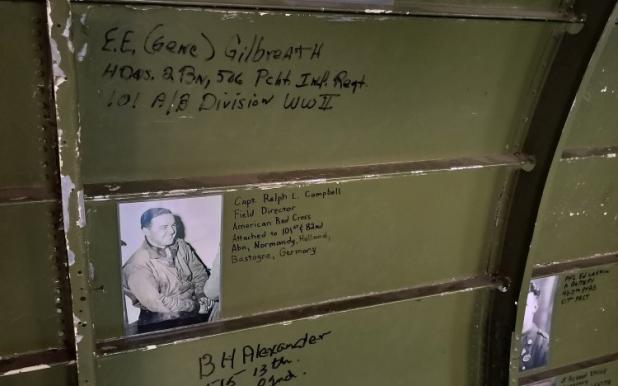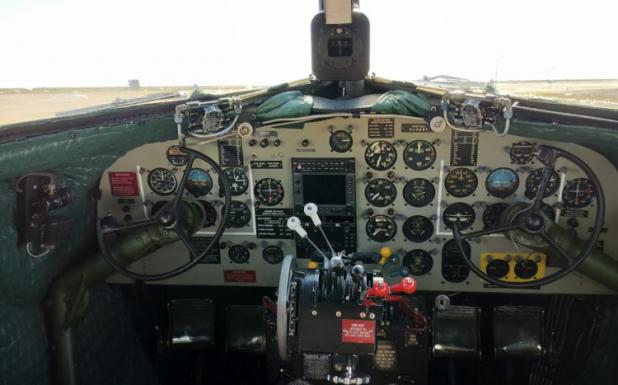



Parachute School: World War II style
with
My dad is in aerospace; my brother is in aviation. When I was young, our family would frequently visit airshows and see vintage aircraft on the ground and in the sky. I still can’t name most planes without looking it up, but nonetheless, I have my own appreciation for the old warbirds, their history, those who flew in them, and what they accomplished. When I saw the Airborne Demonstration Team’s Open Hangar Day, I realized it was only an hour and a half from Olney.
During World War II, the U.S. Army had an airfield in Frederick, Oklahoma. To this day, a hangar has been preserved in WWII-era style. It’s now the headquarters for the World War II Demonstration Team, a 501 (c)(3) notfor- profit entity which hosts a nine-day parachute school twice each year. (A shorter four-day course is also available to those with previous experience who also meet certain requirements.) During this time, they train people, dressed in the uniforms of the era, to jump out of a C-47, using the same techniques that the airborne soldiers of the day would have been trained to use. In order to graduate, you need five jumps.
The day started with all the planes on the ground: a C-49 (named WildKat, formerly known as Boop D Boop); Boogie Baby, a C-47 (aka the Douglas C-47 Skytrain); a Russian Y-52 (aka the Yakovlev, or Russian Yak); a pair of P-17’s (aka Stearman biplanes). There were also additional vehicles, munitions, and infantry reenactors. The 77th Army Band came from Ft. Sill to provide excellent live brass music, wrapping up their performance with “The William Tell Overture.” We toured the planes, chatted with the reenactors, looked at the displays, watched the eclipse, and ate sandwiches in the mess hall.
It was a windy day, right at ten knots. Since parachutists don’t jump when the wind speed is over ten knots, it was uncertain for a large portion of the morning whether they would get a jump today towards their quota. However, conditions were such that authorization was given and twenty parachutists boarded their plane. The rest of us on the ground hopped into our vehicles and caravanned to the landing zone.
The plane made four passes. The first time, it sent out long, yellow streamers to gauge the wind direction. This helped them calculate where to make the drop so that the landings would be accurate. Next, the signal was given, and ten parachutists jumped out: the first stick. On the third go-round, ten more parachutists jumped out: the second stick. There was one more pass to check that all was well, and then the plane headed back to the airfield.
If you’re between the ages of 18 and 65 and meet certain requirements, you, too, can enroll in parachute school. Visit wwiiadt.org to find out more information about what they do and how you can be a part of it. For the rest of us-- the next open hangar days will be scheduled for July and October, 2024.
